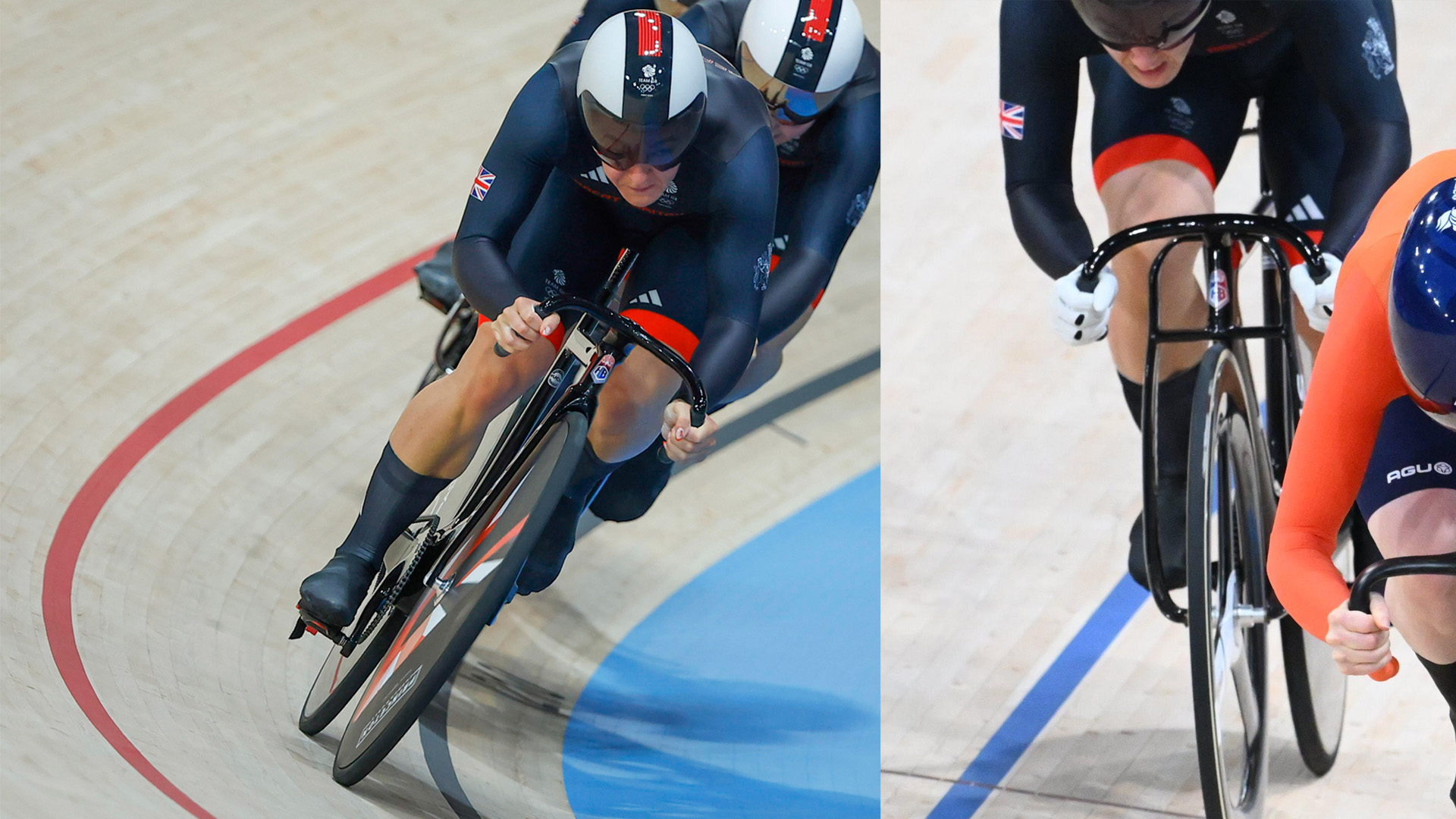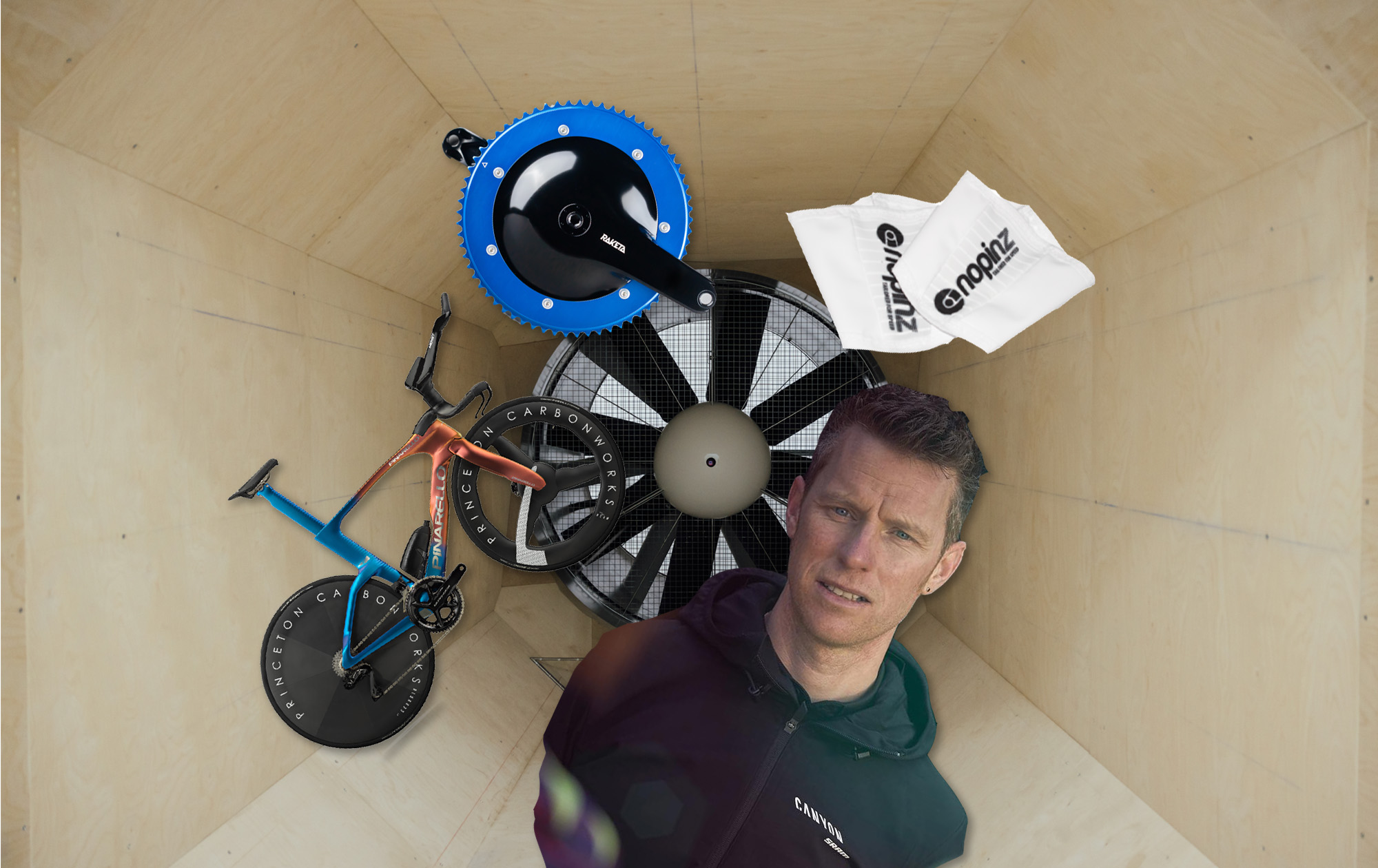Performance Process Newsletter is a fortnightly hub for everything new in the world of performance tech, gains and includes the latest episode of the podcast by the same name: Sign up for the e-mail newsletter here:
Hey folks! After an extended Tour de France and Eurobike-enforced break, we are back with another episode of the Performance Process podcast and newsletter.
As usual, we've a host of techy news tidbits and the latest episode of the podcast which delves into the world of double training days, be those intentional or simply part of your commute. But first, lets kick it off with ...
Weekly "gainz"
As you might expect, alot has happened in the time since our last newsletter and so we have plenty of new and old news to share.
🚲 ICYMI: Supersuits are everywhere in Paris. Specifically, we are talking about so-called "dual-layer" skinsuits. "What's a dual-layer suit?" Glad you asked: We took a closer look at what they are, who has them, and who owns the technology in an article published earlier this week.

NoPinz aero Tovershoes - Speaking of articles on the site, remember when we took a closer look at how Mark Cavendish was going all in on aero after we spotted him and his teammates wearing aero partial shoe covers? Those lace or BOA dial covers are a thing again almost a decade after Specialized supplied a similar cover with their Sub-6 lace-up shoes. NoPinz have a new take on a similar concept, and although they don't include a free pair of lace-up shoes, they are a little more affordable at £40 a pair.

Sync Ergonomics chainrings - Famous for their custom and 3D printed time trial extensions, Australian company Sync have teamed up with cSixx to produce a range of machined-aluminium 1X chainrings. According to Sync's website, the rings are "engineered to be aero and stiff, while offering excellent chain retention and smooth running in the maximum number of gears." The rings are available in five sizes from 54 to 62 tooth.
Furthermore, Sync has also developed a chainring backing plate for Shimano cranks, said to improve both stiffness and aerodynamics. And, as if to sync the entire drievtrain (I'll see myself out), Sync has also developed its own pulley wheels, chain guide, chainring caps, and is now offering Molten Speed Wax-treated chains prepared by Zero Friction Cycling. Adding one of each of the new Sync driveline components to the basket gives me a combined total of £445.

KMC ready-waxed chains - Speaking of waxed chains ... seemingly every company is getting on the train. KMC are now offering a range of pre-waxed road SL, Extra Light, TT, MTB, and E-bike 11- and 12-speed chains along with its own new KMC GO drip wax developed with Squirt. If you are already a waxer, then pre-waxed chains make sense when the time does come to replace your current chain. That said, just having "wax" on the label is no guarantee of superior performance.

Nix Hydration : TrainingPeaks integration: Users of both TrainingPeaks and Nix's sweat-analysing biosensor can now upload their hydration and sweat profile data directly to the TrainingPeaks web and mobile apps allowing those athletes and/or their coaches to view and analyse hydration data in one place as they would with countless other metrics such as power, heart rate, cadence, etc. Nix data will automatically sync to the user's TrainingPeaks profile following an initial account link-up.
Join Period Tracker: Join, an app that provides training plans for cyclists, has announced a new menstrual cycle tracker integration allowing female users to log their menstrual cycles and see the impact reflected in their suggested training. Join partnered with the Martini Hospital and UMCG/Obstetrics and Gynaecology and claims "this feature allows tailored workouts to align with the body’s natural rhythms, helping athletes achieve goals on their and their body’s terms." Join is hoping the data it collects can help "fill a crucial research gap."

As discussed on this week's Geek Warning podcast, Team GB sprinter Katy Marchant used two different forks at the Olympics. As lead rider in the team sprint, Marchant used a narrow fork hugging the front wheel closely. Fast forward two days, she was back on the wider forks more often seen on the GB Hope track bikes for the Keirin. We had speculated the narrow approach in the team sprint may be because as she is effectively getting the team up to speed from a standing start and her position as lead rider doesn't see her hit the speeds where the wake-generating wider fork concept actually provides a benefit. Compare that to the Keirin where she would see much higher speeds and hence may then benefit from the wider fork concept.

Raketa 200 bcd track cranks - Chainrings are trending larger on the road this year, but they are already humongous on the track. Raketa Components out of Czechia reckon these ever-larger chainrings mounted to the same 144 mm BCD track cranks presents issues with increased chainring runout and flex. To address this, Raketa designed a new 200 mm BCD crank standard (black crank with blue chainring) it has retained for the Dutch sprinters at this Olympics but is now offering license- and royalty-free to any crank manufacturer.
Each unit is CNC machined from a solid six-kilogram block of 7000-series aluminium for the drive-side crank arm alone, Raketa claims the new 200 mm BCD combination enhances the stiffness of a 65-tooth chainring "fivefold and improves the overall drivetrain stiffness by an astonishing 25% when compared to the already sturdy Raketa 144 BCD cranks." The company claims the move to seven chainring bolts rather than five provides a "more solid and uniform mount," and overall the new combination could translate to as much as 30 more watts versus competitor cranks.

Sticking with the Olympics, teams were required to homologate and use their equipment for Paris in competition by the Glasgow World Championships and have it commercially available before January 1 on the year of the Olympics for it to be approved for use in the Games. As such, last year's worlds provided quite the treasure trove and items developed since then were not permitted for use this week in the Saint-Quentin-en-Yvelines velodrome.
That's a point the UCI reminded teams of with this notice posted track centre, informing teams both the Kask Aero Pro Visor 2 and these Nimbl custom shoes were not permitted for use this week. the notice cited article 11.1.010 which states: "For track races, any equipment used at the Olympic Games must have been commercially available – in accordance with article 1.3.006 – at the latest on January 1st of the year of the Olympic Games and may therefore not be in development phase (prototype). In addition, the equipment must have been previously used in the year preceding the Olympic Games in an event included in the list as defined in the UCI Track Equipment Registration Procedure."

Pinarello has confirmed its new Bolide F TT we first spotted back in June. It's the carbon fibre love child of the existing carbon Bolide F and the 3D-printed Humpback whale-inspired track frame. Pinarello is promising a 2.28% CdA reduction compared to the previous Bolide F TT thanks to a few new features:
- Chief among them are the "Aeronodes" on the down tube developed in partnership with the University of Adelaide, NablaFlow CFD specialists, and the Humpbacks.
- The bottom bracket profile is now "reinforced" to allow for more tyre clearance without compromising stiffness and it is also "longer and slimmer to reduce frontal area."
- Pinarello has opted for the "narrowest-possible forks and seat stays" having found this concept minimised the weight of the frame and yielded the fastest overall results in multiple wind speed and yaw angle situations when compared to the wider stance concept.
- The base bar is also said to "minimise the total drag of rider and bike," seemingly suggesting Pinarello has followed a similar concept to that of Ribble hoping to use the handlebars as some form of wake generator to reduce drag on the rider's legs behind them.
- Surprisingly, Pinarello has stuck with a relatively normal bottle. Although pictured here with an Elite aero TT bottle, Pinarello has not followed its compatriots Colnago and Wilier's lead to produce a much more integrated fairing bottle.
Wrapping up this week's newsletter I want to share a few social media posts that caught my eye lately.
Let's kick it off with this neat looking solution Lidl-Trek are using for snappier wind tunnel adjustments to the TT extensions. While not for outdoor riding, these adjustable risers look like they could greatly simplify and speed up adjustments between runs.
UK based clothing brand Rule28 just released this behind-the-scenes look at wind tunnel testing their next range of aero kit.
Finally, the pod
And finally, Performance Process is back after a Tour de France-shaped gap over the past six weeks or so. Inspired by the upcoming Tour de France Femmes avec Zwift's split day with two stages in a single day, this week's episode centres on the concept of double training days.
Joining me is Stephen Gallagher, a coach at Dig Deep Coaching and Performance Director at Women's WorldTeam Canyon-SRAM, who shares his expertise on managing double training days. We explore the rationale, benefits, and strategies behind incorporating two training sessions in one day, highlighting how this method can enhance performance, boost recovery, and build resilience.
Key points discussed include:
- The logistics and challenges of managing double training days, particularly in professional races like the Tour de France Femmes.
- The importance of strategic planning in nutrition, recovery, and timing to ensure peak performance.
- Practical tips for all of us on how to implement double training days effectively.
This episode is packed with practical advice on maximising training efficiency and effectiveness whether you are a competitive cyclists doubling up for performance gains or your commute forces you to double up. To listen, just head to our members-only podcast page for access.

Until next time …
That’s all folks! All that's left to say is thank you for reading the newsletter, listening to Performance Process and an extra thanks to all of you who have signed up already as Escape Collective members.
Sign up here to get future editions of this newsletter and others from the Escape Collective network straight into your email inbox.
Until next time ... Trust the process.
Did we do a good job with this story?



